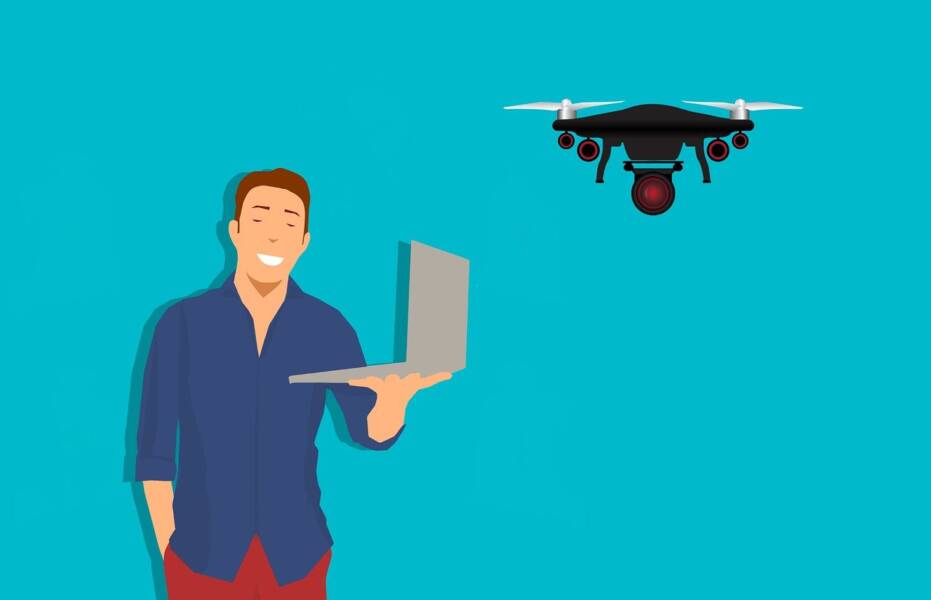Drone photography has transcended the realms of traditional landscapes, opening up a world of creative possibilities that were once beyond imagination. Today, drones equipped with high-resolution cameras have become powerful tools for capturing stunning visuals from the sky. In this article, we’ll delve into the creative applications of drone photography that go far beyond the horizon, exploring innovative and inspiring uses across diverse fields.
-
Cinematography and Filmmaking
Drones have revolutionized the way movies and commercials are filmed, offering dynamic aerial shots that were previously difficult and costly to capture. Filmmakers now use drones to create sweeping panoramic views, breathtaking chase sequences, and intricate overhead shots, adding depth and excitement to cinematic storytelling. Drones equipped with high-quality cameras provide a unique perspective, enhancing the visual narrative of films and documentaries.
-
Wildlife and Nature Photography
Drones have become invaluable tools for wildlife and nature photographers, allowing them to observe and capture animals in their natural habitats without disturbing them. Aerial shots of wildlife migrations, nesting behaviors, and landscapes provide researchers and enthusiasts with valuable insights into the animal kingdom. Drones equipped with zoom lenses and thermal imaging cameras enable photographers to capture elusive creatures and document their behaviors with precision.
-
Environmental Conservation and Research
Conservationists and researchers employ drones for environmental monitoring and research. Aerial surveys of forests, oceans, and ecosystems help scientists assess biodiversity, track deforestation, and monitor climate change effects. Drones equipped with specialized sensors collect data on pollution, temperature variations, and wildlife populations, aiding conservation efforts and informing policymakers about the state of our planet.
-
Archaeological Surveys and Cultural Preservation
Drones have transformed archaeology by providing archaeologists with high-resolution aerial images of excavation sites and historical landmarks. These images aid in mapping ancient ruins, discovering hidden structures, and preserving cultural heritage sites. Drones equipped with LiDAR (Light Detection and Ranging) technology can penetrate dense vegetation, revealing archaeological features that are otherwise invisible to the naked eye.
-
Event Coverage and Sports Photography
Drones have become popular for capturing dynamic and immersive footage of events, concerts, and sports competitions. From marathons to music festivals, drones provide unique angles and aerial views of large gatherings. In sports, drones capture thrilling moments, offering viewers a bird’s-eye perspective of the action. This innovative approach enhances the viewing experience for audiences and adds excitement to event coverage.
-
Urban Planning and Architecture
Urban planners and architects utilize drones to capture aerial views of cities and construction sites. These images provide valuable data for urban development, infrastructure planning, and architectural design. Drones enable professionals to assess land use, monitor construction progress, and visualize potential challenges, leading to informed decision-making in urban development projects.
-
Search and Rescue Operations
Drones play a crucial role in search and rescue missions, especially in challenging terrains or disaster-stricken areas. Equipped with thermal cameras and GPS technology, drones assist rescue teams in locating missing persons quickly and efficiently. Real-time aerial views help responders navigate difficult landscapes, assess damage, and coordinate rescue efforts, potentially saving lives in critical situations.
-
Art and Creative Expression
Drones have become tools of artistic expression, enabling photographers and visual artists to create captivating aerial art installations and light shows. Drone swarm technology allows synchronized movements of multiple drones, creating mesmerizing visual displays in the night sky. Artists use drones as paintbrushes, choreographing intricate patterns and designs against the canvas of the sky, pushing the boundaries of creativity and imagination.
In conclusion, the creative applications of drone photography have expanded our understanding of the world, offering unique perspectives and enhancing various fields. From the depths of nature to the heart of urban landscapes, drones continue to inspire innovation, research, and artistic expression. As technology advances, the creative possibilities of drone photography are bound to evolve, opening new horizons for exploration and leaving an indelible mark on the way we perceive and capture the world around us.

Ingrid Maldine is a business writer, editor and management consultant with extensive experience writing and consulting for both start-ups and long established companies. She has ten years management and leadership experience gained at BSkyB in London and Viva Travel Guides in Quito, Ecuador, giving her a depth of insight into innovation in international business. With an MBA from the University of Hull and many years of experience running her own business consultancy, Ingrid’s background allows her to connect with a diverse range of clients, including cutting edge technology and web-based start-ups but also multinationals in need of assistance. Ingrid has played a defining role in shaping organizational strategy for a wide range of different organizations, including for-profit, NGOs and charities. Ingrid has also served on the Board of Directors for the South American Explorers Club in Quito, Ecuador.








































